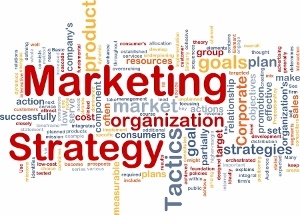Pablo Picasso is quoted as saying: "Our goals can only be reached through a vehicle of a plan, in which we must fervently believe, and upon which we must vigorously act. There is no other route to success." While Picasso may not have been a marketer by profession, he was undeniably successful in his chosen field. His plan for success came to fruition.

A comprehensive inbound marketing strategy consists of many elements.
Picasso-esque Marketing
Just as Picasso's vocation called for detailed planning and well-developed execution, successful inbound marketing today calls for a carefully considered strategy. A comprehensive inbound marketing strategy consists of a well-designed website, content marketing such as a blog, and multiple forms of social media marketing. With proper execution, all these elements work together to create leads for your business.
The Mindset for Inbound
Inbound marketing begins with a simple premise: your potential customers prefer to come to you rather than have you come to them. In other words, inbound marketing is about providing content that draws people naturally to your brand, rather than aggressively pursuing leads with more traditional marketing methods.
This change in perspective is sometimes hard to achieve, since traditional marketing methods are so firmly ingrained in the psyche of most marketers.
So, why is this change necessary? Brian Halligan, CEO of Hubspot, observes: "The Internet has fundamentally changed how we live our lives, and as consumers, we now have more options than ever to tune out marketing that is annoying."
This "tuning out" involves things such as fast-forwarding through commercials, opting out of email subscriptions, and blocking ads where possible. Who has not done one or more of those things to avoid getting an unwanted marketing message?
Considering the ways that the internet has changed the way consumers interact with your brand and the expectations they have about how, when, and where they choose to hear your message, inbound marketing offers marketers the best chance for engaging their target audience effectively today.
The Fundamentals of Inbound Marketing Strategy
That being said, where should you start with inbound strategy? What are the fundamentals? Here is a quick overview of how to create a comprehensive inbound marketing strategy:
1) Know your audience.
This fundamental element holds true for both traditional marketing methods and inbound strategies. With inbound marketing, however, your research must have a bit more depth. Not only must you have a broad idea of your typical ideal customer, but you must also know where that customer is likely to be on social media platforms.
For instance, if your target audience is a B2B professional, you may have more success with social media platforms like LinkedIn, rather than Pinterest. The point is that you must develop a deep understanding of who your target audience is, where they may be found on the internet, and what they are likely searching for there.
Once you find your target audience, you must find their pain points. Hubspot's "How to Build an Inbound Marketing Strategy in 24 Hours" notes: "What you want to do is listen to the problems that your audience is expressing. You want to write down the questions they are asking. Write down the things they are complaining about. You want to be able to speak their language."
2) Build a Content Calendar
Once you know who your audience is, where they reside on the web, and what they want to know, it is time to build your content calendar. This simply means that you will design a plan for content that meets the needs of your target audience.
Since you know the issues they have, you can address those issues with content that is relevant, entertaining, and engaging. This is done on your website through highly readable blog posts, ebooks, whitepapers, infographics, webinars, and so on.
Planning is the key to great content marketing. Rather than viewing each blog post or ebook as a stand-alone endeavor, look at the big picture of the message that you are trying to convey to your audience. While each blog post should give your audience something new to think about, each one should also build anticipation for the information to come.
3) Spice Up Your Social Media Strategy
Content is not only what you give your target audience on your website. It also involves having a strong social media presence on several platforms. The idea is to broadcast your brand in a way that encourages natural interaction with your target audience.
Social platforms like Twitter and Instagram may provide a conduit for short form content that generates quality leads. Ensure that your message is integrated across all your platforms in a consistent, instantly recognizable way for your audience.

Fill your blog with relevant, engaging content.
4) Measure and Adjust
One of the most significant advantages of inbound marketing is its flexibility. Use marketing metrics to analyze where your inbound strategy is performing well, and where it is weak. Then, adjust your strategy to play to your strengths.
For instance, if your analytics show that a campaign on a particular social media platform is under-performing, you may decide to focus your efforts on a different channel. Conversely, you may decide to beef up your efforts on the under-performing channel to bolster your brand there. In any event, paying attention to the results of your inbound strategy will inform future marketing decisions.
How are your inbound strategies working? To find out, request an assessment today. As inbound marketing specialists, we will provide you with an actionable assessment that allows you to take your inbound strategy to the next level.
Written By: Doug Milnor


